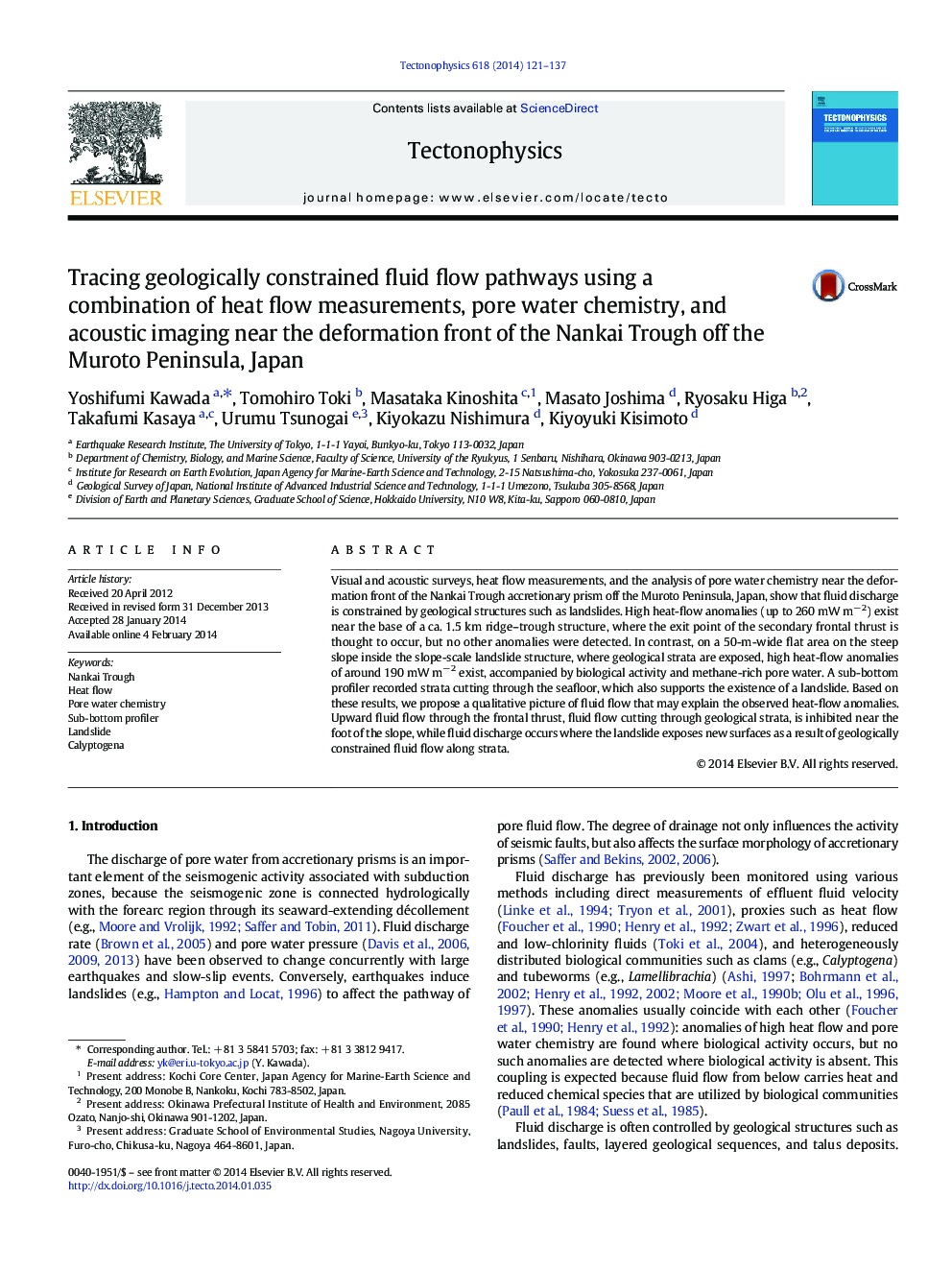| Article ID | Journal | Published Year | Pages | File Type |
|---|---|---|---|---|
| 6433883 | Tectonophysics | 2014 | 17 Pages |
â¢Sub-seafloor fluid flow pathways are determined using multiple data sources.â¢High heat flows exist in areas with or without biological activity.â¢Acoustic imaging detected geological structures that may constrain fluid flow.â¢Modeling of flow pathways and structures explains the observed fluid flow.
Visual and acoustic surveys, heat flow measurements, and the analysis of pore water chemistry near the deformation front of the Nankai Trough accretionary prism off the Muroto Peninsula, Japan, show that fluid discharge is constrained by geological structures such as landslides. High heat-flow anomalies (up to 260 mW mâ 2) exist near the base of a ca. 1.5 km ridge-trough structure, where the exit point of the secondary frontal thrust is thought to occur, but no other anomalies were detected. In contrast, on a 50-m-wide flat area on the steep slope inside the slope-scale landslide structure, where geological strata are exposed, high heat-flow anomalies of around 190 mW mâ 2 exist, accompanied by biological activity and methane-rich pore water. A sub-bottom profiler recorded strata cutting through the seafloor, which also supports the existence of a landslide. Based on these results, we propose a qualitative picture of fluid flow that may explain the observed heat-flow anomalies. Upward fluid flow through the frontal thrust, fluid flow cutting through geological strata, is inhibited near the foot of the slope, while fluid discharge occurs where the landslide exposes new surfaces as a result of geologically constrained fluid flow along strata.
